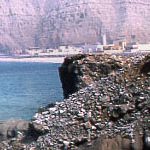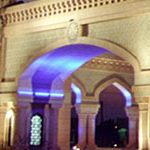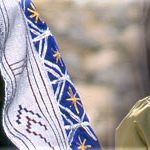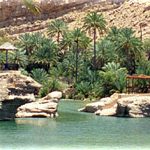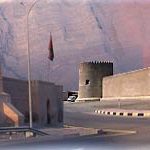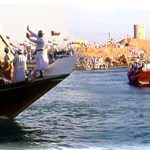Oman’s Unesco World Heritage sites could well see plenty of visitors flock to them during the tourist season, say travel agents and tour guides in the country.
The Sultanate is currently home to four Unesco sites – the ancient Bat Tombs, and Bahla Fort, in the north of the country, the ancient port of Al Baleed, which was once the hub of ancient frankincense trade in Salalah, and the falaj systems that are still the lifeblood of the country’s traditional agricultural practices.
Once the beating heart of the global frankincense trade, Al Baleed in Salalah remains one of the most popular tourist destinations the year round.
“The city of Al Baleed was built in the year 2500BC,” said Amer Al Rawas, of the Museum of the Land of Frankincense in Salalah. “The area known as the Land of Frankincense has four places: Khor Rori, Wadi Dawka, Wubar and Al Baleed. Khor Rori was another name for Samharam.”
“In 2016, the total number of tourists coming to the UNESCO heritage site were more than 117,000, and they enjoy seeing the ancient artefacts, the types of frankincense, the traditional boats, and many other items of Oman’s ancient culture,” he added. “Frankincense has been part of Oman’s history and culture for a long time, because you had Al Baleed as the trading place for frankincense from many parts of the world, such as the Pharaohs of Egypt, the Romans and the rulers of Sindh.
“In the 2017 khareef season, we had more than 50,000 tourists over more than three months,” said Al Rawas.
“We have three main seasons for tourists: our first season sees many European tourists come here from October to April. During our khareef season, most of the tourists we get are from the Gulf countries. We also have many students from Dhofar come to see us from September to December, and then they come once again from February to June.”
Ali Muhammadi is a licenced tour guide and co-founder of Omani travel blog OmanTripper. He had much to share about Bahla fort, which was built during the Nabahina dynasty, which lasted from 1154 to 1624.
“Bahla fort is quite popular because it is one of the oldest castles in the region and stood through many generations of rulers through Oman’s history,” he said. “When you look at the history of the fort, it was quite clear that it was built upon many foundations, some going back as far as the pre-Nabahina dynasty.
“The whole area around Bat is scattered with beehive tombs, but that is just one of the areas,” he added.
“If you drive in this region, which is located next to Ibri, you will see other places such as Al Ayn and Al Khutm, which have similar beehive tombs.
“These tombs date back to the Bronze Age, which was more than 5,000 years ago, and here you are, standing five metres away from it, so this is really fascinating.
“Oman’s falaj system is known for its complexity and history dating back thousands of years in Oman, and the technique of transporting large quantities of water across long distances in those days is really fascinating, and our ancestors developed this using groundwater and rainwater from the mountains,” he said. “If you visit some of the areas in Al Dakhiliyah and trace the source of a Falaj system, you will see that the source of the groundwater is sometimes kilometres away.”
In the wake of Oman promoting itself as a tourist destination, travel agents in the country are receiving plenty of enquiries about these Unesco World Heritage sites.
“More and more people are now starting to discover places outside of Muscat, and in terms of history, these places are landmarks and memorable to the people in Oman,” said Michelle Callaje, senior travel consultant at TravelPoint. “These days, there is a drastic increase in enquiries about people wanting to visit these places.
“We are getting about 150 enquiries about these places from various clients every month, but previously, that number was only about five or 10,” she added. “This has been the case since the first or second quarter of this year.”
